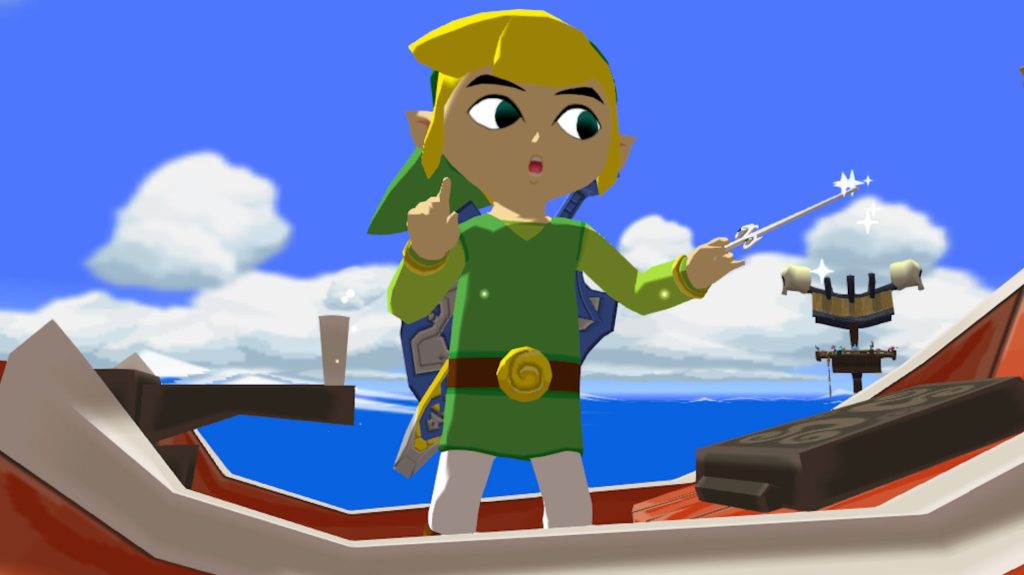With the recent announcement of its release on the Switch 2 as part of the Nintendo Classics GameCube lineup, The Legend of Zelda: The Wind Waker deserves a moment of reflection. This beloved entry in the Zelda franchise, originally launched in 2002, has long been a topic of discussion among fans, known for its unique art style and innovative gameplay elements. It’s a game that, despite its initial divisiveness, has grown in esteem over the years, earning its place among the all-time greats of gaming.
The Controversial Launch
At the time of its initial release on the Nintendo GameCube, The Wind Waker was met with mixed feelings from fans. Many criticized its cel-shaded graphics, which diverged from the more realistic style of its predecessor, Ocarina of Time. Some players viewed the vibrant cartoonish aesthetic as a stark departure from the darker, more mature tones established in earlier titles. However, over time, this bold artistic choice has become one of the game’s most praised features, with many players now citing its timelessness and charm. According to an article on IGN, the cel-shaded art style has aged better than many of its contemporaries, helping the game to maintain visual fidelity even years after its initial release.
A Journey of Adventure and Exploration
Despite initial hesitations, many players quickly fell in love with the gameplay mechanics and expansive world of Wind Waker. The game introduces players to a vast ocean filled with islands to explore, dungeons to conquer, and treasures to uncover. The sailing mechanic, while initially criticized for its slower pace, offers a sense of freedom rarely seen in games of its time. Players maneuver their ship, the King of Red Lions, across an open sea, engaging in a rhythm of adventure that invites exploration.
Each island presents its unique challenges and puzzles, expertly integrated into the gameplay loop. As players progress, they acquire a variety of tools that enhance their abilities and open up new gameplay mechanics, keeping the experience fresh. The game is a masterclass in pacing and design, providing numerous surprises and challenges even as players find themselves immersed in its cutesy art style. Reviewers note that it is this balance of challenge and charm that solidifies The Wind Waker‘s status as a fan favorite.
Soundtrack and Atmosphere
The enchanting soundtrack of The Wind Waker is another standout feature that contributes to the overall experience. Each piece perfectly encapsulates the adventurous spirit of sailing and exploration. The integration of music into gameplay, such as the iconic wind conducting feature, enhances the emotional connection and atmosphere throughout the journey. The audio complements the vibrant visuals, creating a cohesive experience that resonates deeply with players.
As noted by GamesRadar, “the music isn’t just a backdrop; it’s a character in its own right, guiding players through moments of tension, excitement, and nostalgia.”
Timeless Gameplay Elements
While The Wind Waker may lack some of the polish of contemporary releases, particularly with the absence of certain features found in the subsequent HD remaster on the Wii U, its core gameplay remains engaging. The original version offers a unique experience with its charming narrative, clever dungeon designs, and whimsical character interactions. Players engage in quests that can extend their playtime from a brisk 30-hour campaign to over 70 hours if they pursue complete mastery through side quests and collectibles.
Despite some technical limitations, the game maintains a vibrant, lively world where exploration rewards curiosity and creativity. The Legend of Zelda series continues to be a cornerstone of gaming, as demonstrated by the recent release of Tears of the Kingdom, which further explores mechanics rooted in titles like Wind Waker.
Community Reception and Legacy
The community’s perception has evolved dramatically since the game’s release. What was once seen as a polarizing title is now regarded as a masterpiece of game design. Fans cite the game’s charm and innovative gameplay as central to its lasting legacy. Its influence can be seen in many subsequent Zelda titles, particularly in the way it emphasizes exploration and adventure. Over 30 million copies sold worldwide, according to Statista, solidifies its place in gaming history.
Moreover, the anticipation surrounding its release on the Switch 2 only adds to its legacy, highlighting its enduring appeal to both new and veteran players alike. Those who missed Wind Waker during its original launch are encouraged to embark on Link’s journey amid the vibrant, wind-swept seas and island adventures that await.
Quick Reference Table
| Feature | Details |
|---|---|
| Release Date | 2002 (GameCube) |
| Visual Style | Cel-shaded graphics |
| Playtime | 30 hours (main) / 70 hours (completionist) |
| Sales | Over 30 million copies sold |
| Legacy | Influenced future titles in the series |
| Platform Re-releases | Wii U, Switch 2 |

